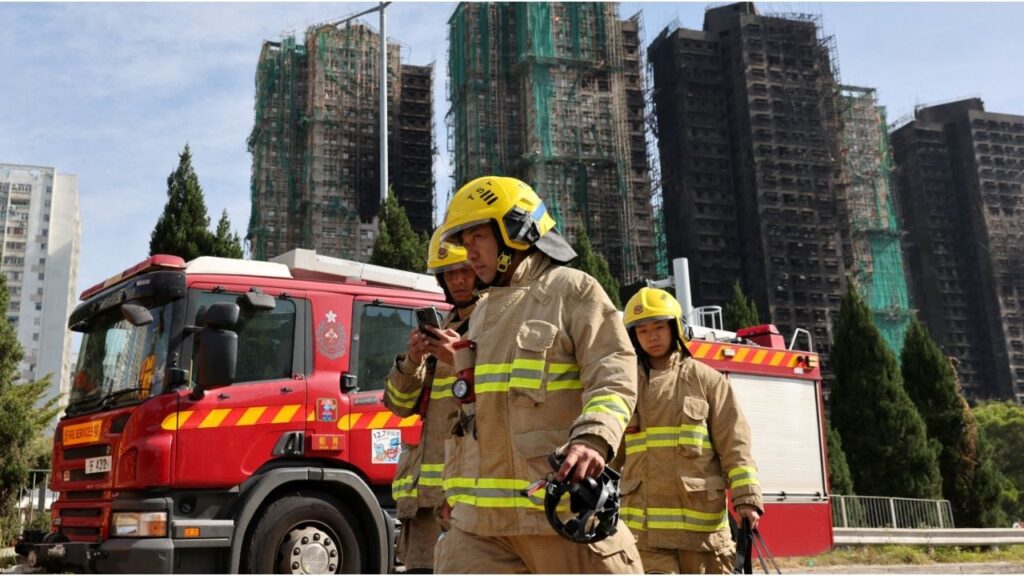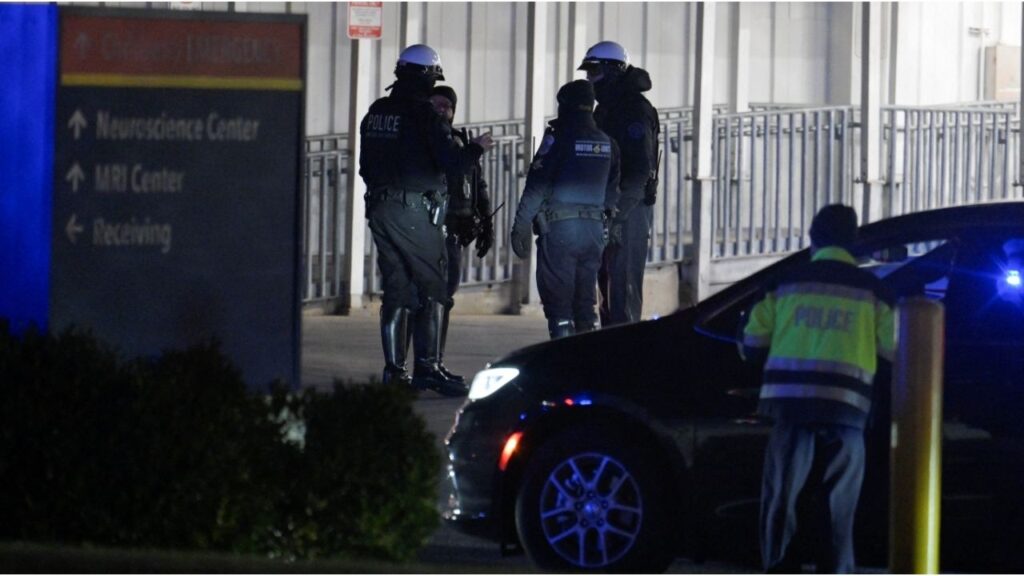Share
SACRAMENTO — With the smell of California wildfires in the air, President Donald Trump on Monday ignored the scientific consensus that climate change is playing a central role in historic West Coast infernos and renewed his unfounded claim that poor forest management is mostly to blame.
The fires are threatening to become another front in Trump’s reelection bid, which is already facing hurdles because of the coronavirus pandemic, joblessness and social unrest. His Democratic challenger, Joe Biden, in his own speech on Monday said the destruction and mounting death toll across California, Oregon and Washington require stronger presidential leadership and labeled Trump a “climate arsonist.”
Trump traveled to Northern California to be briefed by Democratic Gov. Gavin Newsom and other state and federal officials. At one point, state Natural Resources Agency Secretary Wade Crowfoot urged the president to “recognize the changing climate and what it means to our forests.”
“If we ignore that science and sort of put our head in the sand and think it’s all about vegetation management, we’re not going to succeed together protecting Californians,” Crowfoot added.
Trump responded, “It will start getting cooler, just you watch.”
Crowfoot politely pushed back that he wished the science agreed with the president. Trump countered, “I don’t think science knows, actually.”
That striking moment came on a day of dueling campaign events, with Trump and Biden dramatically contrasting their outlooks on climate change —and the impact it has had on the record-setting fires ravaging the West Coast.
Biden lashed at Trump, saying the moment requires “leadership, not scapegoating” and that “it’s clear we are not safe in Donald Trump’s America.”

Trump Had Been Mostly Quiet as the Catastrophe on the West Coast Has Unfolded
“This is another crisis, another crisis he won’t take responsibility for,” Biden said. He said that if voters give “a climate denier” another four years in the White House, “why would we be surprised that we have more of America ablaze?”
Trump, who was briefed during a stop near Sacramento before a campaign visit to Phoenix, had been mostly quiet as the catastrophe on the West Coast has unfolded over the past few weeks. He tweeted appreciation of firefighters and emergency responders on Friday, the first public comments he had made in weeks about the fires that have killed dozens, burned millions of acres and forced thousands from their homes.
The president arrived at at Sacramento McClellan Airport to the powerful scent of smoke from the fires burning some 90 miles away.
He contended anew that Democratic state leaders are to blame for failing to rake leaves and clear dead timber from forest floors. However, many of the blazes have roared through coastal chaparral and grasslands, not forest.
“When you have years of leaves, dried leaves on the ground, it just sets it up,” Trump said. “It’s really a fuel for a fire. So they have to do something about it.”
University of Colorado fire scientist Jennifer Balch called Trump’s deflecting blame on forest managers “infuriating.”
“It’s often hard to know what Trump means,” Balch added. “If by forest management he means clear-cutting, that’s absolutely the wrong solution to this problem. … There’s no way we’re going to log our way out of this fire problem.”

As the Wildfires Rage, Some Climate Activists Have Expressed Frustration
Biden, who gave his climate speech in Delaware on Monday, released a $2 trillion plan in July to boost investment in clean energy and stop all climate-damaging emissions from U.S. power plants by 2035.
But as the wildfires rage, some climate activists have expressed frustration that Biden has not been more forceful on the issue. He has not embraced, for instance, some of the most progressive elements of the Green New Deal.
To that end, Biden in his address did not wade into political and policy disagreements among Democrats, progressive activists and even some Republicans who acknowledge the climate crisis. As he has before, Biden sought to frame his energy proposals as an immediate necessity and a long-term economic boon focusing more on new jobs and a cleaner economy that would offset any initial costs.
“Donald Trump’s climate denial may not have caused these fires and hurricanes,” Biden said. “But if he gets a second term, these hellish events will continue to become more common and more devastating and more deadly.”
Trump visited McClellan Park, a former U.S. Air Force Base about 10 miles outside Sacramento that is used by firefighters as a staging area for large aircraft used in combating blazes. Most of the largest firefighting aircraft have not been utilized in recent days due to heavy smoke limiting visibility.
Biden’s running mate, California Sen. Kamala Harris, will return to her home state on Tuesday to meet with emergency service personnel to be briefed on the state’s wildfires.

All Five of the State’s Largest Fires in History Have Raged in the Past Three Years
In 2015, Trump stated bluntly: “I’m not a believer in global warming, I’m not a believer in man-made global warming.” After the publication of the Intergovernmental Panel on Climate Change report concluded climate change would hurt the economy, Trump said he read it but didn’t believe it. In September 2019, he falsely slammed the Green New Deal as an effort that would lead to “No more cows. No more planes … no more people, right?”
Climate scientists say rising heat and worsening droughts in California consistent with climate change have expanded what had been the state’s autumn wildfire season to year-round, sparking bigger, deadlier and more frequent fires.
All five of the state’s largest fires in history have raged in the past three years, including the deadliest fire, a 2018 blaze that killed 85 people when it swept through the town of Paradise on the slopes of the Sierra Nevada. Trump during his Monday visit awarded seven members of the California National Guard the Distinguished Flying Cross for the rescue of dozens of Californians during the 2018 Paradise fires.
An analysis out in August from Stanford climate and wildfire researcher Michael Goss and others found that a nearly 2-degree (1 Celsius) rise in autumn temperatures and 30 percent drop in rainfall has more than doubled the number of autumn days with extreme fire weather over the past 40 years.
All five of the state’s hottest days on record have struck since 2014, overlapping one of the state’s worst droughts on record.
The link “isn’t surprising. It’s born out by the observations. And the future is not looking any better,” Goss said in an interview.



















